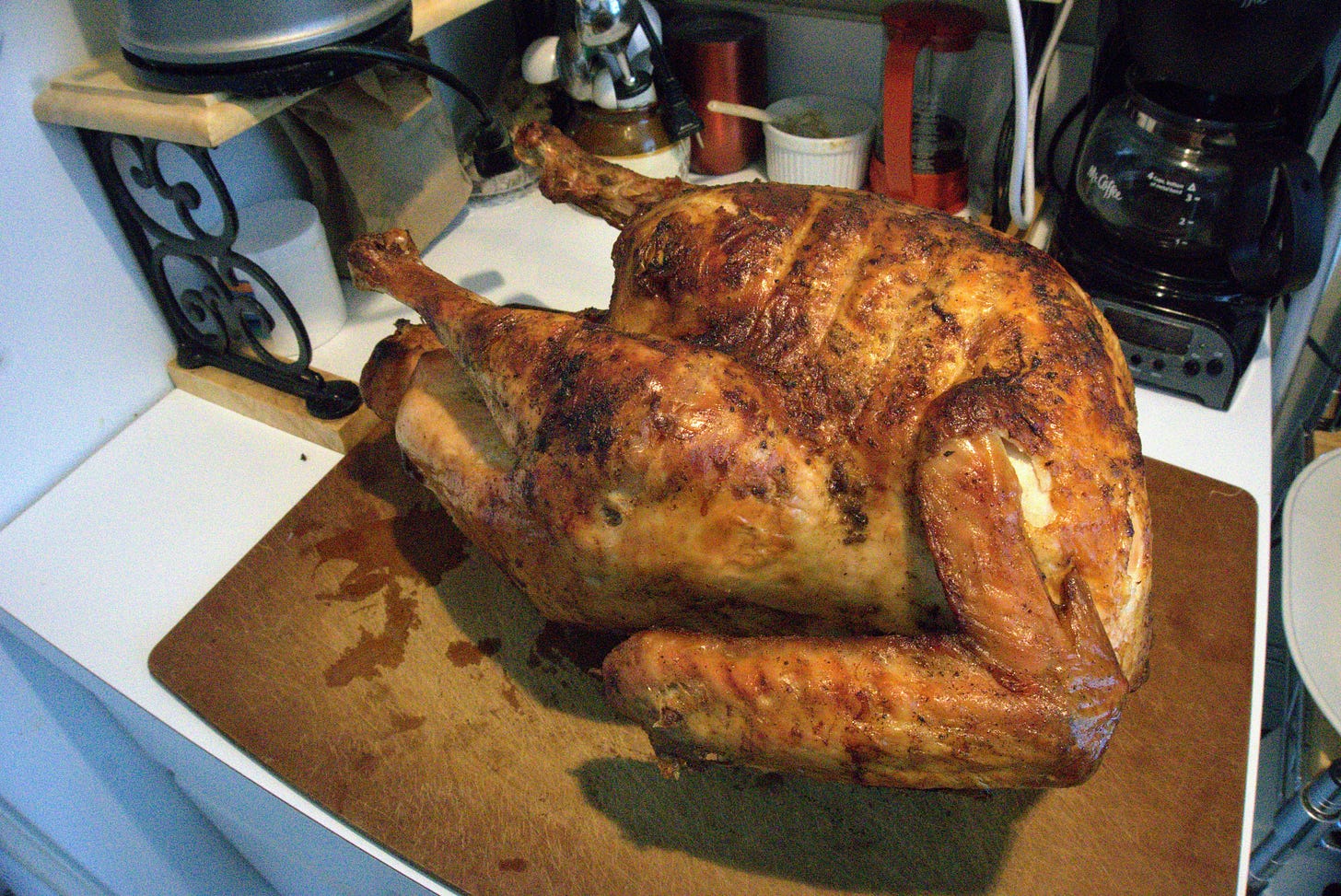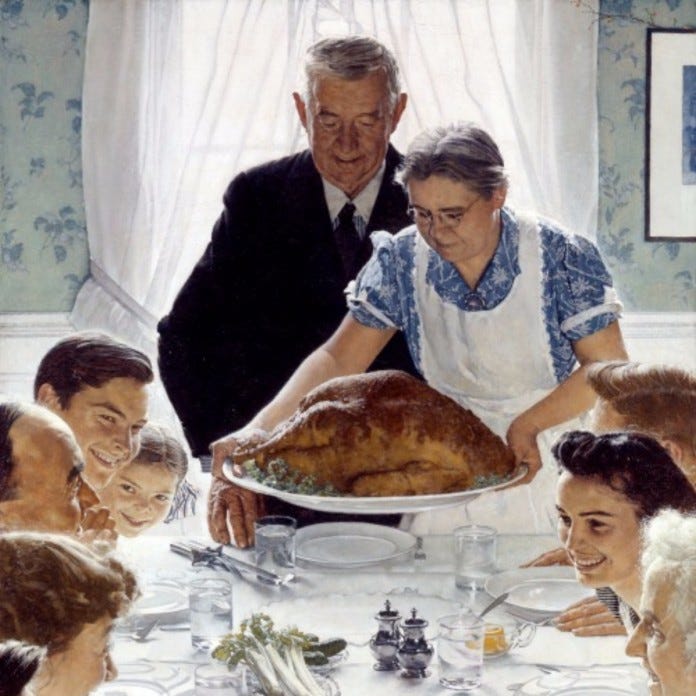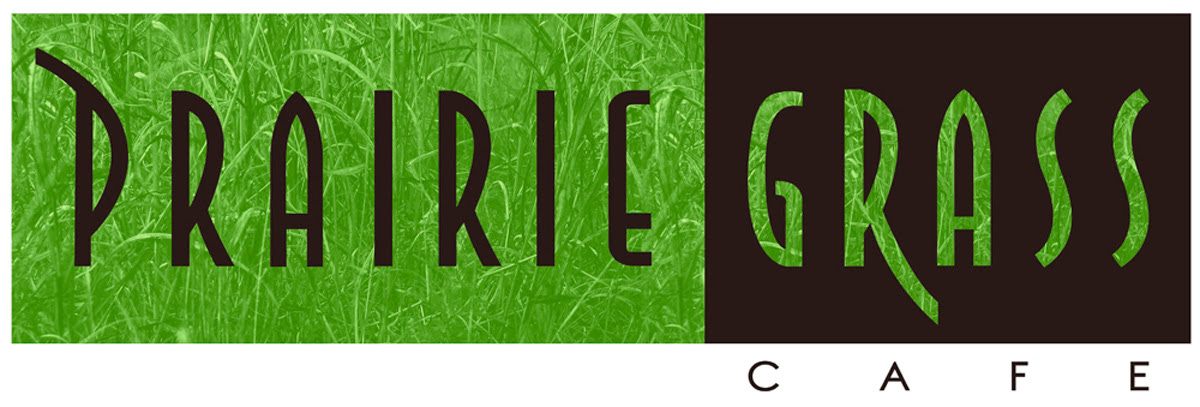It's a Beautiful Morning. Now Let's Talk Turkey
Some ideas from me and the pros on how to cook a pastured-raised bird
The Morning After (Election Day)
Good morning, Illinois!
Tips on Cooking a Pasture-Raised Turkey

Last Friday I promoted my latest article for the Buy Fresh Buy Local Illinois Directory, which was on the timely topic of why you should consider a locally produced, pasture-raised turkey for your holiday meal. This prompted one of our wonderful subscribers to ask whether I have cooking tips for roasting one of these heritage birds.
It is a good question. Most heritage breeds are at least a bit closer to their wild turkey cousins than the broad-breasted, mass-produced whites that make up most commercial turkey sales. And because they spent most of their lives getting their steps in on pasture, they tend to be more muscular than the birds we’re used to, with a smaller breast meat to dark meat ratio; this has an impact on cooking time, as it takes white meat less time to cook than dark.
With that said, a couple of decades or so ago, I learned what has turned out to be a foolproof technique. The only challenge here is that you need to rotate the turkey twice during cooking. The purpose is to have the turkey cook breast side down for most of the cooking time.
Why? Because the oven heat cooks from the top down, and if you cook the bird breast-side up, the juices will run out. You’ll have lotsa juices in the pan for gravy, but the breast meat may be dry, which is the main reason why most people who say they hate turkey hate turkey.
Here’s the process:
Preheat the oven to 425, then cook for 20 minutes.
Remove the pan from the oven, turn the turkey breast-side down, and cook for another 20 minutes at 425.
Lower the temperature to 325 and guesstimate how long it will take to get within about a half hour of being completely cooked (the rule of thumb is that it cooks at about 15 minutes per pound). Leaving nothing to chance, check occasionally with a meat thermometer inserted into the thigh above the joint (165 is your safe target temp, though some experts suggest 185 to be very safe).
Put on oven gloves or use hot pads, remove the pan from the oven, and turn again (use turkey forks if you have them). Be careful of hot juices when you’re doing the turn!!
Continue to cook at 325. Watch carefully for browning, and remove when the turkey reaches the safe temperature of 165 on the thermometer.
Finally, and this is really important, let the turkey rest for 20 to 40 minutes, which lets the juices redistribute. If you cut into a turkey blazing hot from the oven, those juices you’ve been patiently curating will run out and the meat will be hard (and hot) to cut.
Since the timing is approximate and results may vary depending on what kind of oven you use, your best friend is a meat thermometer. Check frequently as it gets near your estimated cooking time. Some folks say the temperature for poultry should read 185 degrees; I tend to shoot for a little lower, but I don’t want to be responsible for anyone undercooking and getting sick. Just watch that thermometer and don’t overcook.
Now there is another technique that I’ve used on occasion, and which you might try if you’re not having company and don’t need to bring out a whole roasted bird to display (as in the Norman Rockwell painting above).
Instead of roasting the turkey whole, break it down into its parts, and separately cook the white and dark meat. This requires a sturdy, sharp knife or cleaver, but it’s probably easier than you think if you’ve never done it before.
Here I turn to John Caveny of Caveny Farm — featured in my Buy Fresh Buy Local Illinois article — for his tips to turkey-cooking success.
We have suggested probably for over 10 years to cut the turkey up raw. You know, Julia Child had that in her cookbook. It's certainly nothing we came up with. But there are real advantages, and especially on these heritage breeds. These turkeys have been running around for six months of their life… They've got a lot of connective tissue, they've got a lot of muscle that is in good condition, off the legs and the wings…”
OK, so this is a start. Tomorrow I’ll aggregate some recipes from our turkey farmers’ websites, and pass on some info about 99 Counties, an Iowa pastured-raised turkey farm that reached out to me.
Have your own turkey roasting magic? PLEASE share and I’ll publish it.
11/17 Harvest Dinner to Honor Native America
Chefs Sarah Stegner and Sebastian White to Team for Special Night
Hopefully you’ve learned from Local Food Forum about Sebastian White, the chef/clinical psychologist who has created The Evolved Network non-profit to assist underprivileged youths through food and urban farming. Legendary farm-to-table chef Sarah Stegner of Northbrook’s Prairie Grass Cafe is one of Sebastian’s leading advocates.
So it was almost inevitable that they would team for a dinner, and a special one, to boot. Tickets are on sale for the Late Fall Harvest Dinner, which will include special guests for a conversation in honor of Native America — certainly a timely topic with Thanksgiving coming up.
The dinner will be held on Thursday, November 17 from 6 to 8 p.m. at Prairie Grass Cafe, 601 Skokie Blvd. in Northbrook. The menu includes whitefish crostini, roasted squash, confit goose cake, wild rice and butternut squash-chili puree, and vegan grape ice cream from Pretty Cool Ice Cream. Wine pairings are optional.
Familiar farms that are providing ingredients include Three Sisters Garden, Froggy Meadow Farm, Nichols Farm and Orchard, Ellis Family Farms, and Oriana’s Orchard & Nursery.
Click below for more information about the dinner and the speakers, and a phone number to call to book your ticket.






